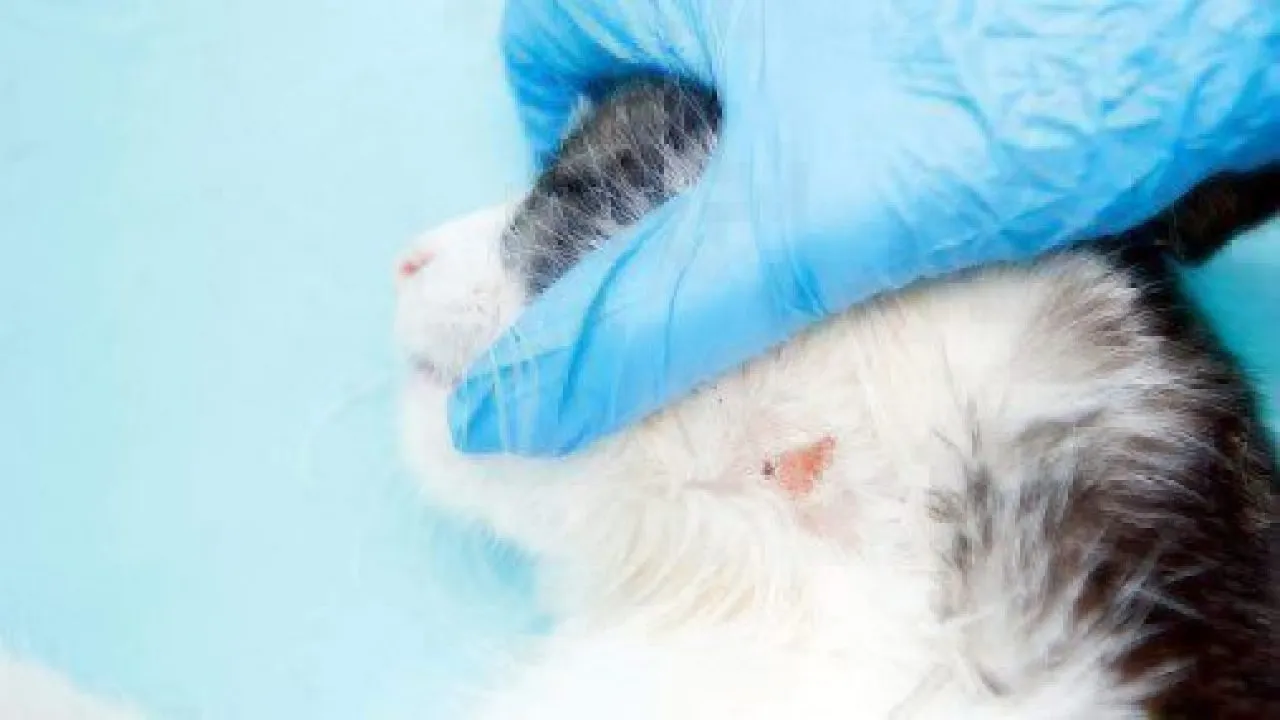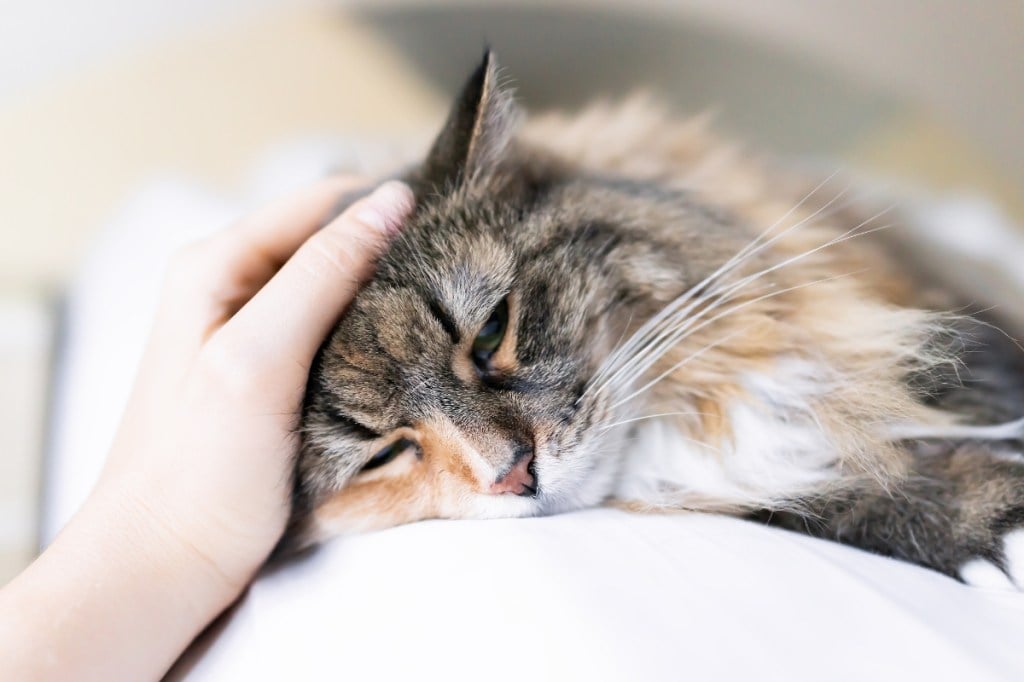Table of Contents
Key Takeaways
- Ringworm is a fungus that is common in cats and dogs. It can also spread to humans.
- A vet can diagnosis ringworm with a UV light and fungal culture.
- Ringworm treatment options include shampoos, ointments, and oral medications.
- Extensive cleaning is necessary to prevent the spread of ringworm in the house.
Ringworm is not actually a worm, but rather a fungus (dermatophytosis) that is very popular among cats, and can spread to humans and even other domesticated animals. Ringworm in cats and dogs presents with patchy red spots, usually circular, and sometimes bald areas on the head, chest, back, and legs on cats (severe infections can be all over the body).
Dr. Ernest Ward from VCA Animal Hospitals breaks down the science on their site: “Ringworm fungi feed on the keratin that is found in the outer layers of the skin, hair and nails… Some pets may have round, thickened patches of skin with hair loss. Hair loss (alopecia) occurs when the spores infect the hair shafts, resulting in increased fragility of the infected hairs.” It’s transmitted through other animals or contact with an infected pet’s bedding or throughout their territory, and kittens and senior cats are the most vulnerable to the fungus.
What to Do if You Suspect a Ringworm Diagnosis:
First step, wash your hands. You’re going to be doing that quite a bit.
Second, take your pet to the vet to confirm the diagnosis. They typically use a UV light and a fungal culture taken from your pet’s skin. For extreme cases of ringworm, vets have been known to perform a biopsy and check out the samples under a microscope.
Third, begin treatment. To combat the infection, there are special shampoos, treatments, and ointments to kill the fungus, as well as oral medications. And that’s just the beginning, because after getting on the road to treatment, you then have to get down to business.
Ringworm is particularly hardy and can spread to everybody in the house, so there’s a pretty thorough cleaning game plan to beat the beast:
- Bathe all pets in the household with a medicated rinse or shampoo while wearing gloves. After bathing or treating your cat, be sure to wash your hands and sanitize any surfaces your cat been in contact with during the bath – this includes the tub, any towels, sponges, rags.
- Wash the infected pet’s bedding and toys with a disinfectant that kills ringworm spores. Some spores may remain dormant on brushes, bowls, bedding, carpet or other surfaces for up to 18 months, so it’s recommended to thoroughly wash with bleach (one pint of chlorine bleach (500 ml) in a gallon of water (4 liters), or a dilution of 1:10 to 1:100). Throw away items that you simply can’t disinfect – carpeted cat trees and houses, toys, etc.
- Vacuum daily for about two weeks to rid the house of infected hairs and skin cells. Any shedding can carry spores, so it should be considered the enemy.
- Separate your infected pet from non-infected pets, if at all possible (although it may have already spread). In some cases, vets recommend treating all pets in the house. Your vet will let you know what’s the best course of action.
- You can try to restrict pets to certain rooms of the house if that makes it easier to clean.
Typically, it takes two consecutive negative ringworm cultures to indicate your pet has been successfully treated, so you will have to go back to the vet to make sure. Most pets recover, it just will be inconvenient if you aren’t equipped to thoroughly sanitize your home. However, if people in the house start showing signs, make sure to head over to your general practitioner.
The content is not intended to be a substitute for professional veterinarian advice, diagnosis, or treatment. Always seek the advice of your veterinarian or other qualified health provider with any questions you may have regarding a medical diagnosis, condition, or treatment options.
By enrolling your pet early, conditions and illnesses like parasite infection treatments (unfortunately, not your cleaning bill) will be covered up to 90% by your Healthy Paws pet insurance. Find out more by getting a free quote.







